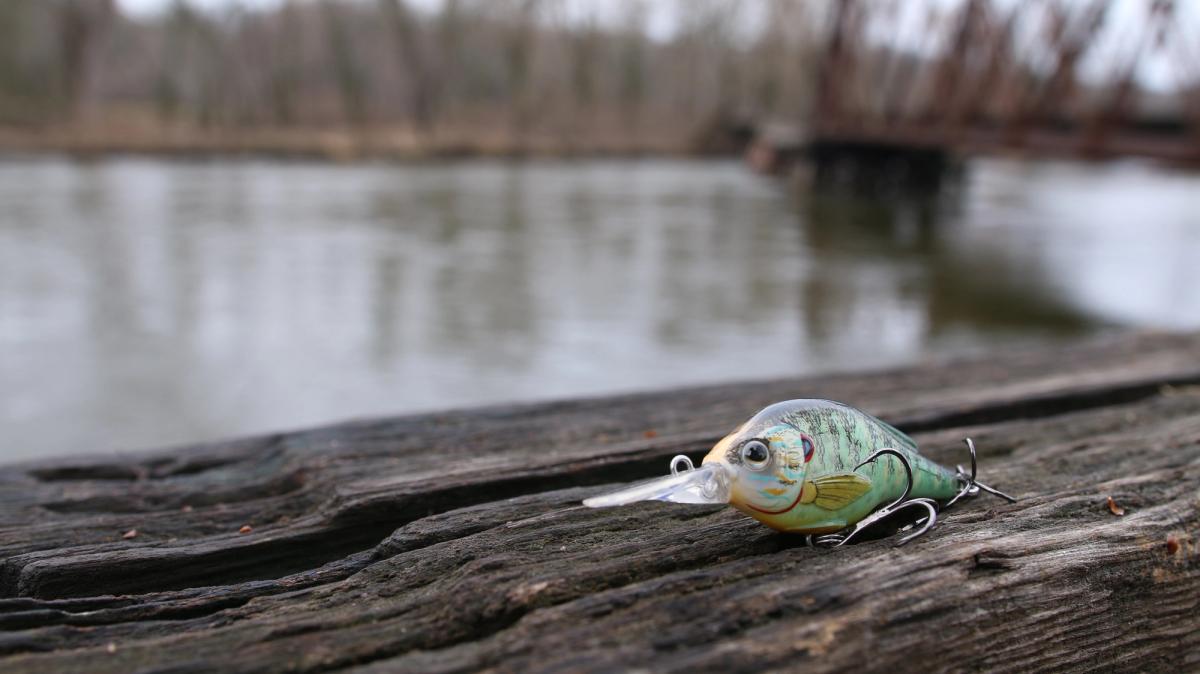How to Choose The Right Crankbait
Throwing crankbaits is one of the most effective ways to catch bass throughout the year. They catch numbers of bass, they catch big bass, and they do it under almost any conditions. Their effectiveness is tied to the fact that crankbaits can imitate almost anything a bass feeds on - making them a good option whether the bass are feeding on shad, bluegill, or even crayfish.Because crankbaits are so effective, there are literally hundreds of different models on the market. If you take a walk down the aisles of your local tackle shop, you can easily become overwhelmed by all the available options.Should you use a deep diver with a big lip? How about crankbait with a round bill or a square bill? How big of a body should you be throwing? What color? It's enough to overwhelm even the savviest angler.To help you out, we've put together the following guidelines regarding crankbait selection, something that should help you catch more bass this coming season.
3 important factors for crankbaits
There are three things you should primarily focus on when choosing a crankbait. The first is the depth you're going to be throwing it, the second is the water temperature, and the third is the size and type of forage you're trying to imitate.
Depth
Many anglers are afraid to fish crankbaits because they are scared to lose them. Unfortunately, that's also why they don't catch many fish when they do throw them. To most effectively fish a crankbait, you need it to periodically contact structure. To do that, you should whenever possible opt for a crankbait that runs slightly deeper than the water you are fishing.If you're fishing a breakline that drops into 5 feet of water, you should choose a crankbait that runs 6 feet deep. If you're fishing a point in 10 feet of water, choose one that runs 10-12 feet deep. You may get snagged a few times, but you'll catch a lot more bass and have a lot more fun on the water.Pro Tip: Invest in a good plug knocker. It will allow you to fish snaggier cover and recover more crankbaits when you do get hung up. A good plug knocker will more than pay itself off if you're a crankbait fisherman.
Temperature
Because bass are cold blooded, their bodies (and metabolism) are linked to the temperature of the water. The colder the water, the more they slow down. Because of that, anglers should use the water temperature to determine the type of wiggle and bill shape when choosing crankbaits. The rule of thumb is that the colder the water, the tighter the wiggle.Crankbaits with narrow profiles and round bills produce the tightest wiggles, and baits wider profiles and square or coffin lips have the most erratic actions and work best in warmer water.Traditional cold water favorites include baits like the Rapala Shad Rap, the Strike King Lucky Shad, and the Storm Wiggle Wart, all of which have slender rounded bills.In warmer water, baits with erratic actions like the Castaic BD Square Bill, Strike King KVD 1.5, and the LiveTarget Bluegill are most effective.
Profile/Color
Once you've got the depth and action right, the last thing you should consider when selecting which crankbait to throw is the profile and color.Pay attention to the size of any shad or bluegill you're seeing and try to match the hatch. You can also downsize to try and generate more strikes, and upsize to specifically target bigger bass.Color also becomes important in the general sense of "what are you trying to emulate". In the spring, crawfish colors are most effective because the bass are primarily feeding on crawfish. In weedy, shallow lakes, bluegill patterns are most effective, and in deep, clear, reservoirs, shad patterns take top billing. Water color also becomes important in color selection, as the dirtier the water, the brighter the colors you should choose.
Updated November 3rd, 2021 at 4:45 AM CT


